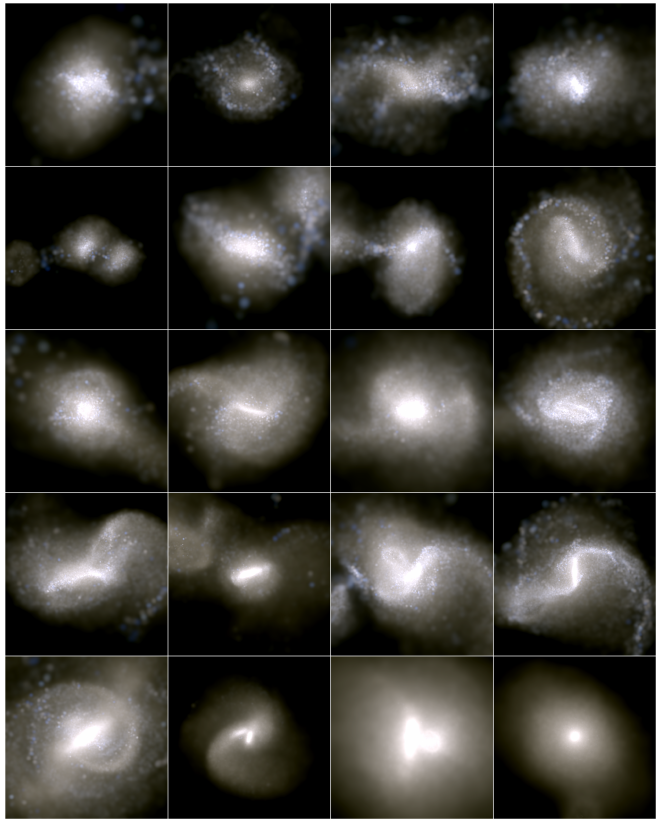Research highlight: Morphologies of supermassive black hole merger hosts and multimessenger signatures
One of the key predictions of the hierarchical structure formation paradigm is that galaxies merge together to form more massive systems, with spectacular observational examples across a range of redshifts corroborating this picture. If the majority of massive galaxies host a supermassive black hole in their centre, it is expected that during galaxy mergers black holes will sink towards the merger remnant centre due to dynamical friction, and form a binary. The hardening rate and the ultimate fate of such a binary is currently unclear, but if embedded within certain types of stellar or gaseous environments it is possible that the black holes will merge themselves on a comparatively short timescale. Scarcity of supermassive black hole binary detections so far, together with low mass black hole mergers detections by ALIGO and Virgo, lends support that gravitational wave (GW) projects such as Laser Interferometer Space Antenna (LISA) and Pulsar Timing Arrays (PTAs) may, for the very first time, detect GWs from supermassive black hole mergers in the near future. Excitingly, in the case of supermassive black hole merger we may expect that there will be an electromagnetic counterpart detectable by e.g. JWST, Athena, MeerKAT and SKA, with the multimessenger field expanding rapidly in the last couple of years.
Given their importance both for our understanding of the theory of galaxy formation as well as their upcoming detections from GW projects, at KICC we have investigated the mergers of supermassive black holes and their host galaxies, with a particular focus on the correlation between the black hole merger and the host galaxy morphology. Using the Illustris and IllustrisTNG simulations, we look at the galaxies which host black hole mergers, and find that the typical host galaxies show a range of disturbed morphologies, consistent with what we expect following a recent galaxy merger (see Figure 1).
Host galaxies remain morphologically disturbed for ~300-500 million years after the black holes form a binary, with the strongest effect found in mergers between high-mass black holes with comparable masses. While initially promising for multi-messenger astronomy, this timescale of several hundred million years is comparable to the expected time between black hole binary formation and the final coalescence and emission of GWs, suggesting that electromagnetic follow-ups to GW detections may not be capable of observing merging morphologies of the host galaxies. However, both this timescale and the expected black hole growth during the merger itself need to be much better constrained by future cosmological simulations to make robust predictions for LISA, PTA and multimessenger science.



